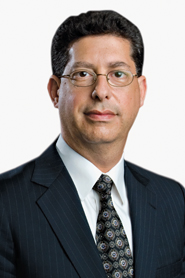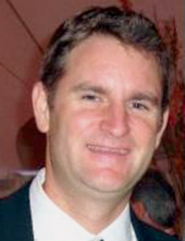The controversial practice of dividend-capture options trading has ground to a halt at three of the four floor-based exchanges that have offered it.
According to data published by the International Securities Exchange, dividend trade volume disappeared at NYSE Arca, NYSE Amex and Chicago Board Options Exchange in November.
Dividend-capture trading is still practiced at Nasdaq OMX PHLX, according to the ISE data, a fact that rankles at least one industry official opposed to the practice because of the operational risks posed.
“We are very gratified that several other exchanges have recently joined with ISE in eliminating support for this trading strategy,” said Gary Katz, ISE president and chief executive. “However, as long as there are exchanges that facilitate and encourage dividend trades, they will continue to pose a completely unnecessary risk to the options market and damage investor confidence.”

The disappearance of dividend trades at the three exchanges followed moves by all three in late October to eliminate the caps they had on fees charged for such trades. Eliminating the caps largely eliminated the pricing incentive—a volume discount—to do the huge trades in the first place.
The decision by the exchanges to eliminate the incentives came in the wake of an incident in September when a clearing firm reportedly lost millions of dollars handling dividend-trades in SPDR S&P 500 ETF (SPY) options. The Dow Jones News Service reported that the Merrill Pro division of Bank of America Merrill Lynch lost $10 million on those options. The bank would neither confirm nor deny the report, although speculation is that a clerical error occurred.
The three exchanges filed their fee changes with the Securities and Exchange Commission in late October, citing concerns over “operational risk.”
“We had been looking askance at this activity for some time,” said Steve Crutchfield, in charge of NYSE Euronext’s options business told Traders Magazine.
“But collectively the industry skated on this. This problem could’ve been much, much bigger. In our view, as long as these trades continue to happen there is operational risk out there that needs to be addressed,” he said.
The CBOE told the Securities and Exchange Commission in a rule-making proposal filed October 26, that it did not want to provide brokers with an incentive to conduct the trades “because this strategy may encourage high volumes of trading of certain securities near the ex-dividend date and present operational risks to market participants with respect to clearing, exercise, and assignment or other issues that may prevent the market participant from the timely exercise of call options and collecting the dividend owed.”
Concern over the practice has been building for years. The ISE has long been an outspoken critic, claiming the trades distort industry volume patterns, harm individual investors, and present the practitioner with great risk for little gain.
It is next to impossible to ban the practice, exchange executives say, because of the difficulty of determining the purpose of a trading strategy when executed. A trader could enter into the kind of “spread” trade needed to capture dividends, without the intention of doing so. There is no tag or other identifier that indicates the intention to capture a dividend payout is involved.
“It’s not obvious from looking at the trade,” Crutchfield explained.
Dividend capture trades are carried out almost exclusively by market makers, who hope to profit by capturing dividends that are about to be paid out on securities by establishing ownership just before a payout is authorized .
At least one market maker who does not do dividend trades agrees with the ISE that the trades are harmful. Danon Robinson, founding partner of Toro Trading, an equities options market maker in New York, notes much of the trading is done by a group of specialist firms that do nothing else.
The trades hurt both market makers and retail investors with short call positions. “You have this world of dividend spread traders who suck up all that edge with little risk, instead of actually providing any liquidity to the market,” Robinson said. “They’re not doing anything except sucking out the money that would go to the natural liquidity providers or retail investors.”

The four floor-based exchanges first began capping fees on the dividend strategy trades to win the business of market makers in 2003 and 2004. PHLX has always been the largest venue for the trades; Arca was a distant second. The ISE reported that, in November, about one quarter of PHLX’s contract volume came from dividend trades. That was about 14.5 million contracts.
Overall, according to ISE data, the percentage of options contracts traded as part of dividend capture strategies declined between September and November. In September, the trades accounted for nearly 9 percent of industry volume. In October and November, that figure dropped to about 5 percent.
(At least one executive at a competing exchange contends the data can be inaccurate. However, the ISE is the only source of such data. The Options Clearing Corporation does not break out dividend trades.)
Dividend capture trades are large, pre-arranged floor trades between market makers done on the day before a stock begins trading without its dividend. The trades are carried out in order for ownership to commence on the day the underlying securities are authorized to receive dividends.
The purpose is to end the day with several long call positions. Dealers will then ask their clearing firms to exercise those calls, take ownership of the shares and qualify for the dividend.
To make it work, one market maker sells hundreds of thousands of deep in-the-money calls to another. That dealer, in turns, sells the same calls back to the first dealer. This is repeated over and over throughout the day.
Both dealers end up with both long and short call positions. They exercise their long positions to gain ownership of the shares. They deliver most of those shares following a directive, or assignment, from the OCC to honor their obligations under their short call positions.
The market makers bet they won’t get assigned on all of their short positions. That way they can keep the dividends on some of the shares they acquired.
Whether the market makers are assigned or not depends on the lottery system operated by the OCC. In all likelihood, they will be assigned on most of their shares, but not all. Their profit is derived from the dividends they get to keep.
The trade itself is considered risk-free because the short call positions are offset by the long call positions or the shares. But errors can happen during the exercise process. A market maker could forget to request an exercise or a clearing firm could neglect to exercise the calls. (Some clearing firms have increased their rates in recent years to dissuade their customers from conducting dividend trades, according to trading officials.)
Despite the potential for error, Nasdaq is sticking by the practice on its PHLX exchange. As the three other floor-based exchanges were eliminating their fee caps, PHLX raised its from $1,000 per trade to $1,250. Nasdaq would not comment for this article.
The NYSE’s Crutchfield believes more needs to be done. “We believe these trades are not economically beneficial to the marketplace and therefore there is no reason to encourage them with deep fee discounts to try and attract this meaningless market share,” he said.




